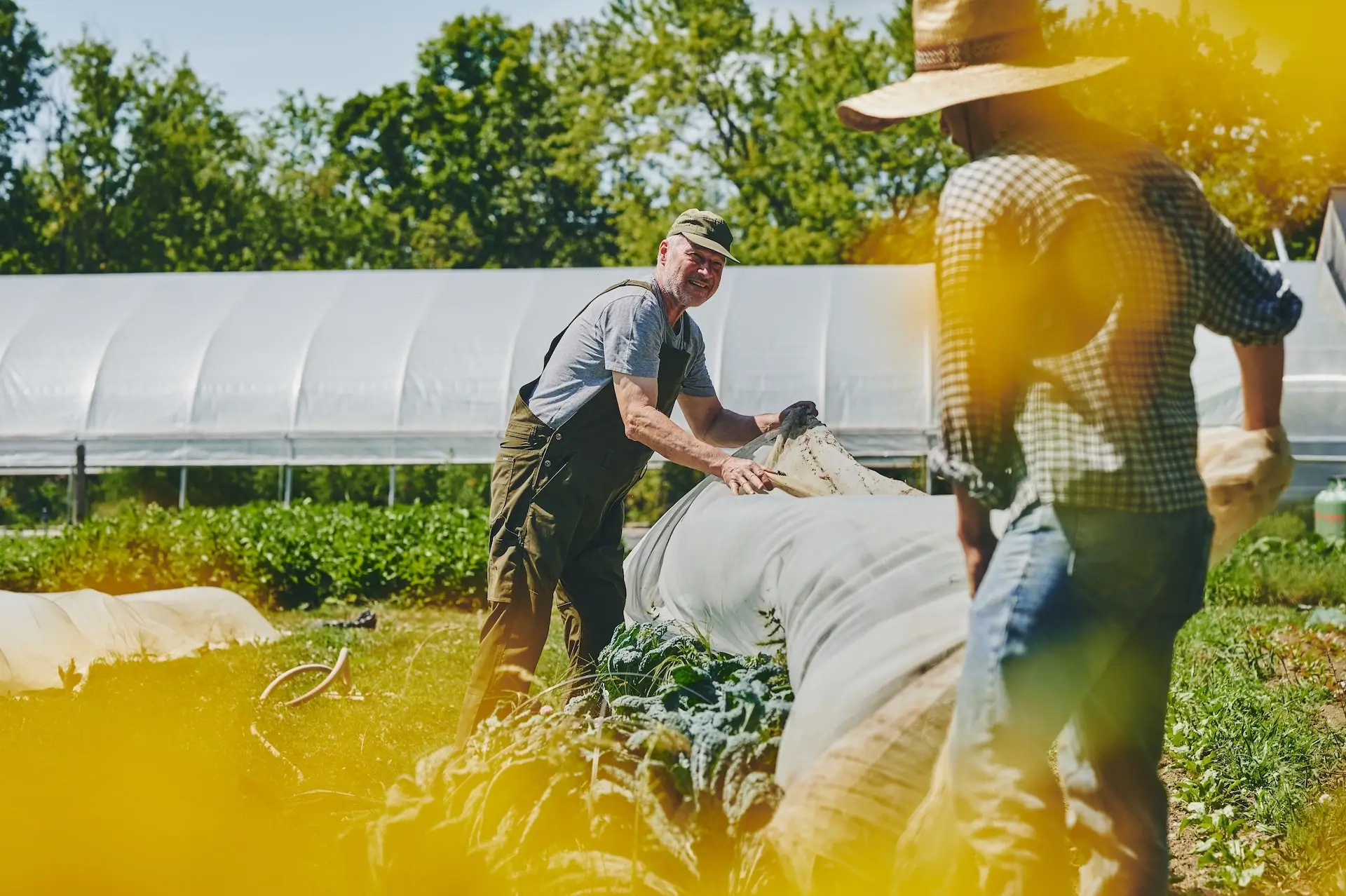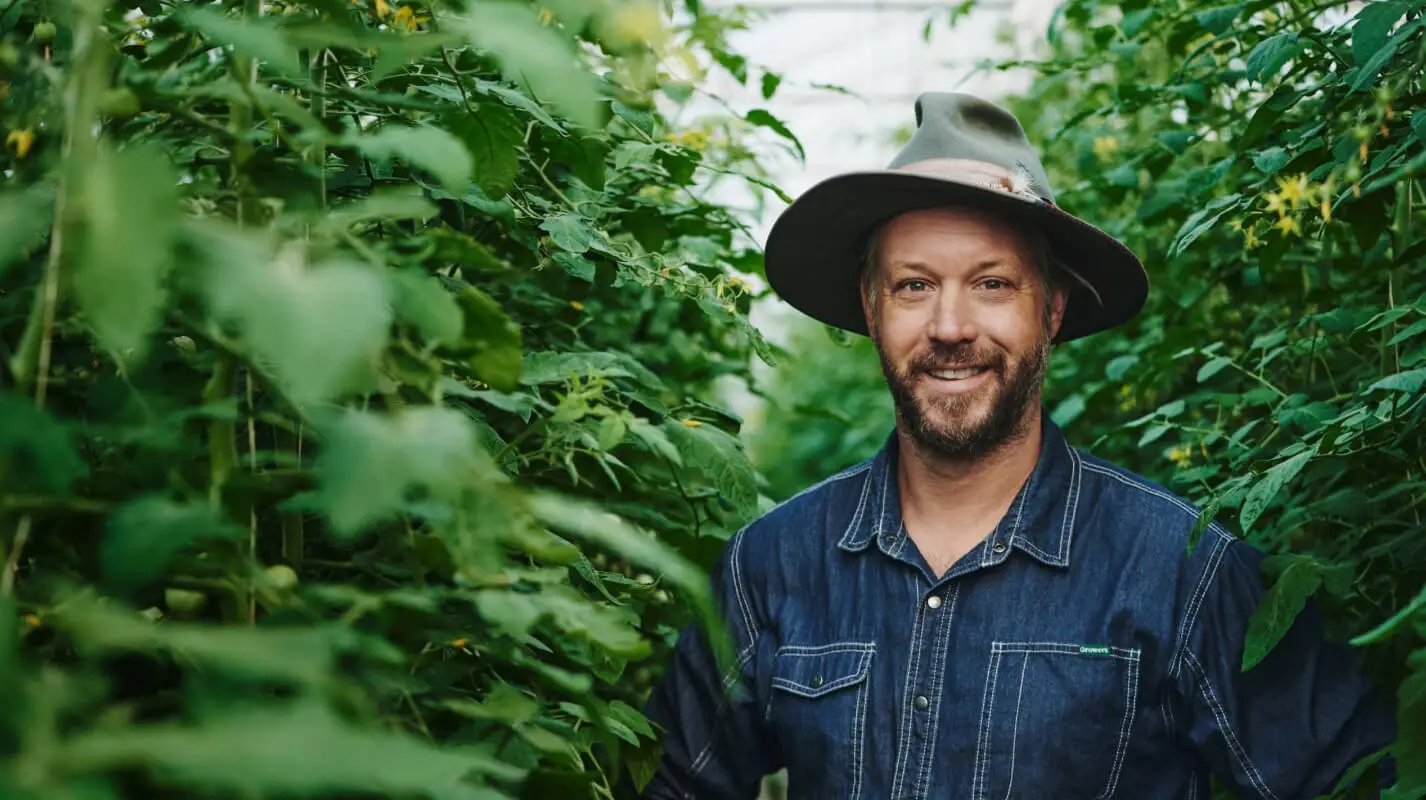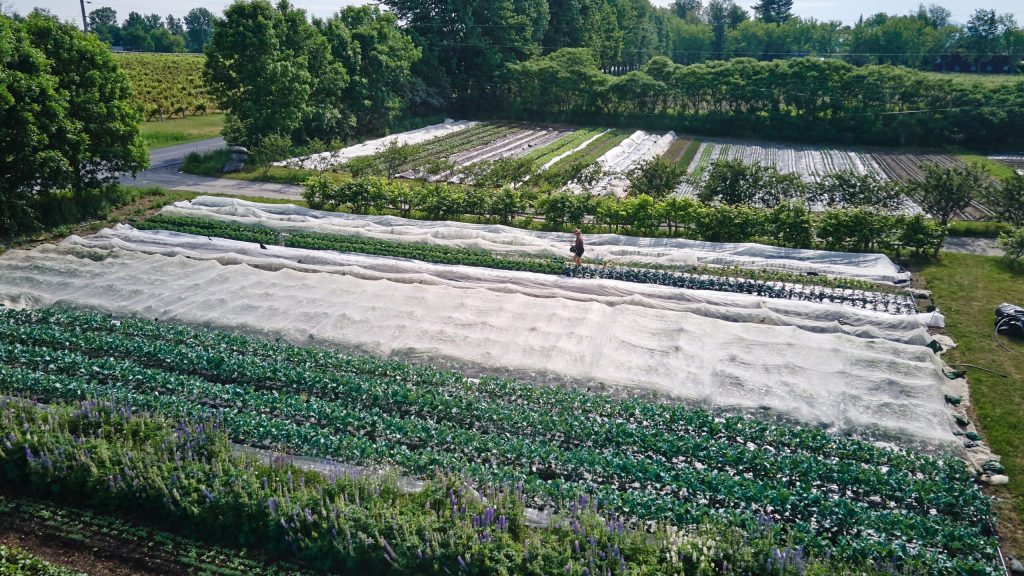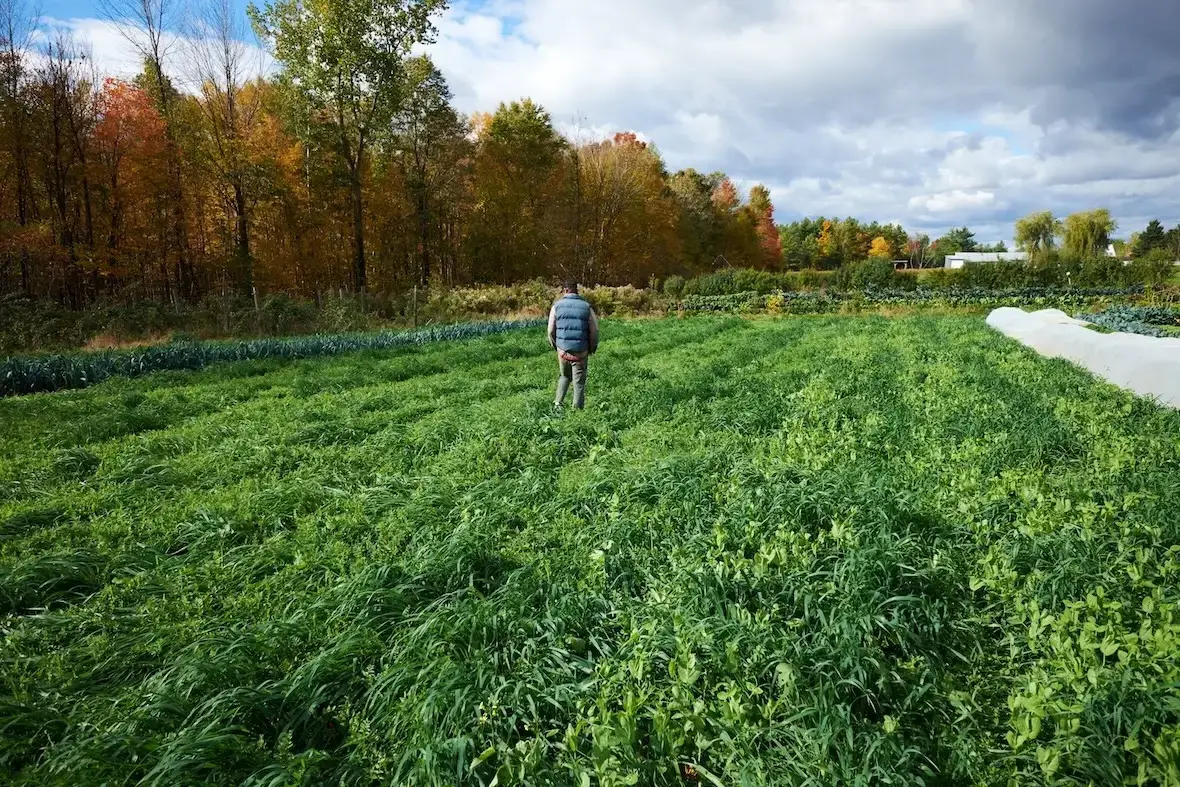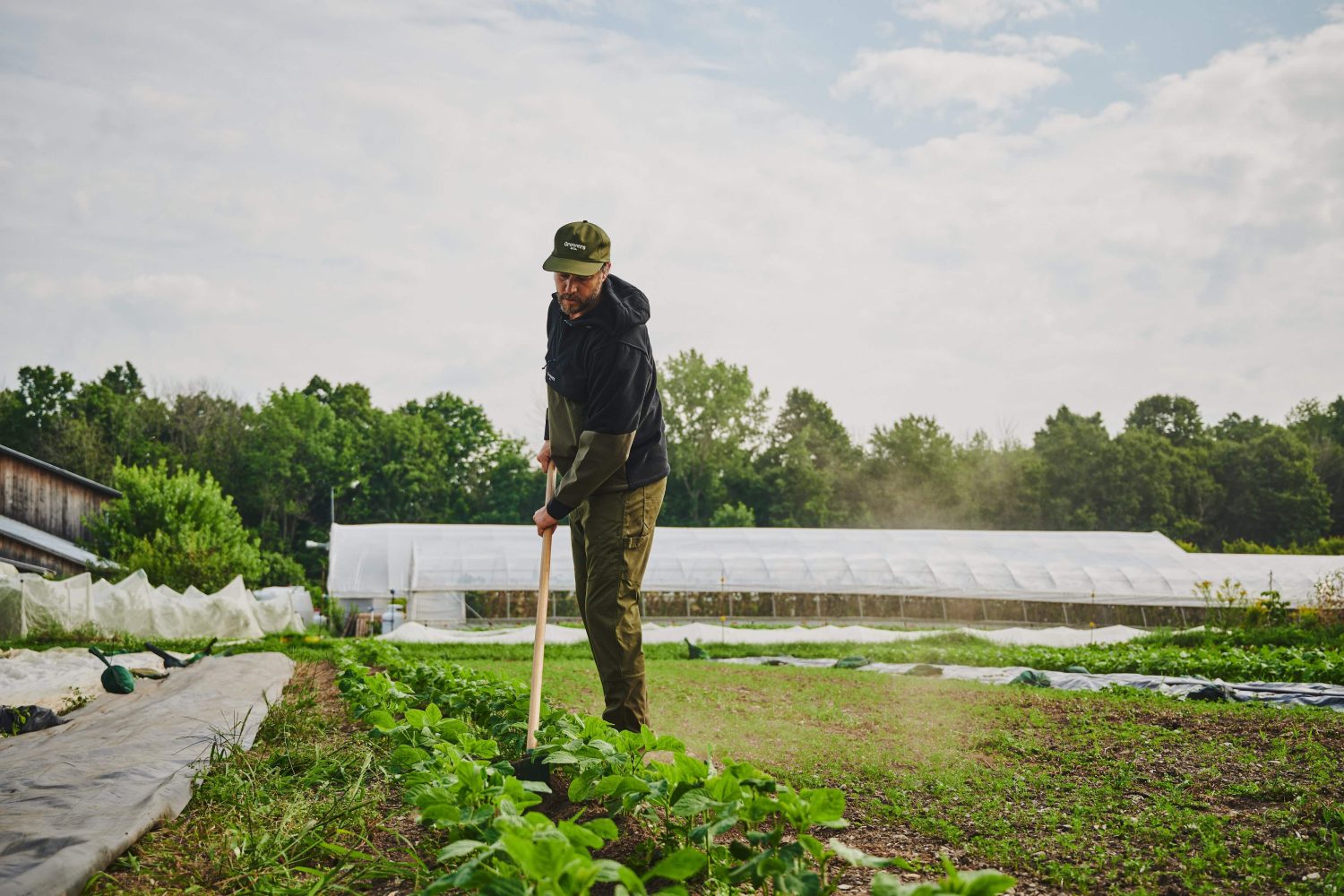Making a profitable farm doesn’t come with miracle recipes to be followed to the letter. The path is full of pitfalls, and the context of each farm demands a great deal of adaptation and resilience. Each person adds his or her own color to the set-up and operation of his or her production. However, there are principles that can help you make the most of your small acreage. Here are 6 principles that I believe are crucial to making your production more profitable. Of course, there are many more!
1 – Designing and systematizing your farm for efficiency
By this I mean, on the one hand, the design of the farm, i.e. the organization and layout of infrastructures such as the greenhouse, paths, packing room, nursery, irrigation system, etc., and, on the other, the systematization of operations with clear, simple procedures.
Good farm design ensures a multitude of efficiencies that will have an effect day after day, season after season. The idea is often to ensure the fluidity of operations and minimize footsteps. Consider, for example, creating a central point where all frequently visited areas are close to each other, or placing tools close to where they’re used most often. There’s a lot to consider when conceptualizing your farm. Take the time to think it through.
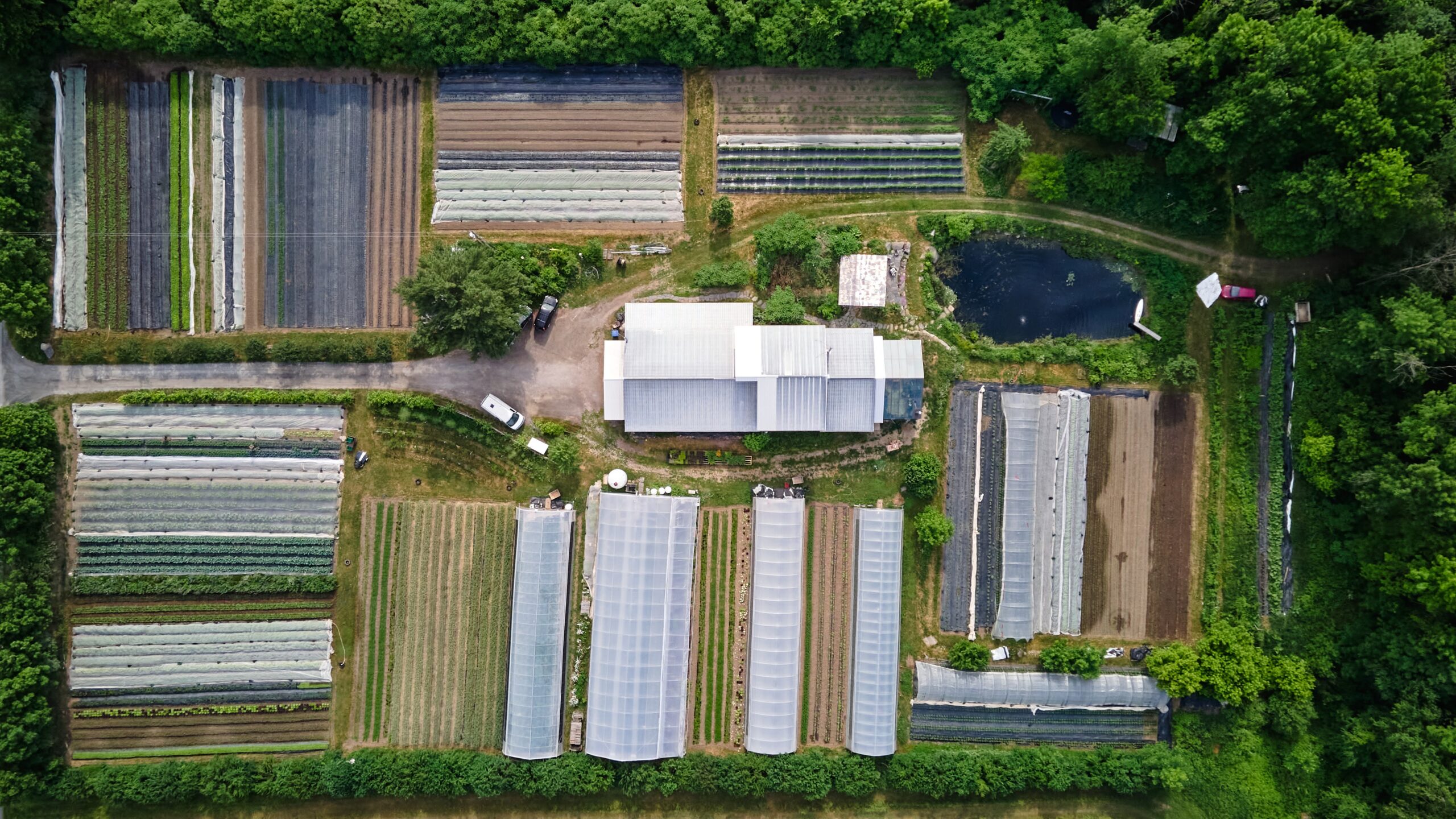
Next, we need to systematize day-to-day operations by creating common procedures and ways of doing things. The whole team needs to be on the same wavelength to ensure consistent results. Systematizing the way tasks are carried out enables you to isolate variables, and thus better modify what is not optimal. Moreover, points of irritation or recurring errors are often indicators that there is room for improvement.
Good ideas happen all the time. The point is to write them down so that they eventually come to fruition. That way, you can decide whether to take the time during high or low seasons to optimize a process. Sometimes, an idea will save you so much time that it’s worth the effort to implement it quickly. The important thing is to take some time to optimize your farm.
2 – Making lists
A market garden is a highly complex enterprise. In addition to having the financial and administrative implications of a business, its highly diversified production is closely linked to nature and its unpredictabilities.
Making lists helps to manage this complexity and work overload. Lists draw up a picture of everything that needs to be done, helping to prioritize tasks, anticipate problems and limit forgetfulness. When everything is in our heads, we act on what comes to mind at the time. Without lists, you run the risk of putting your energy into what’s not essential, while time is sorely lacking.
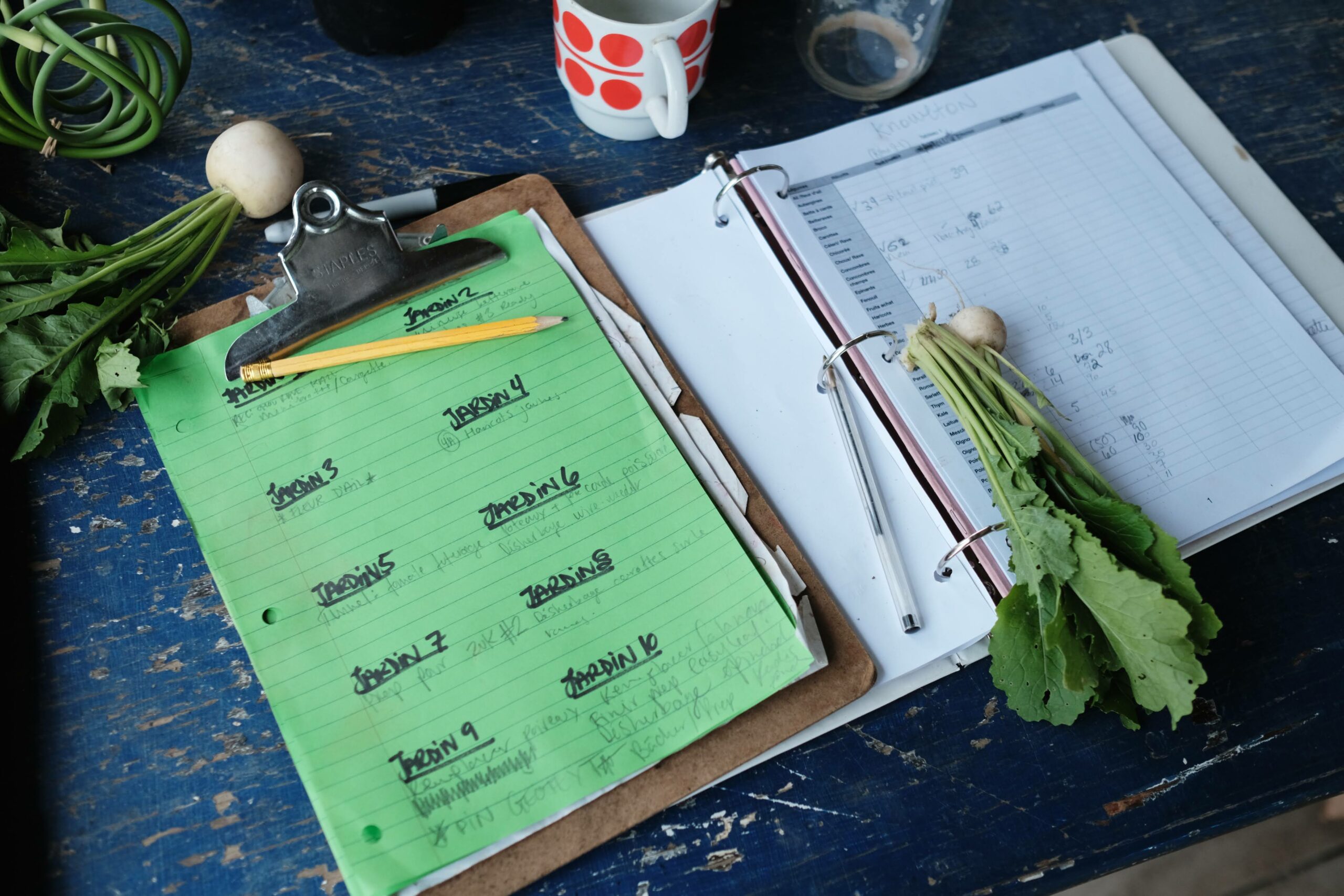
You may find yourself accumulating lists and getting baffled by their very organization. However, the more you do, the more you’ll find the right place for each type of information (crop planning? Calendar? Noting pad? Board? Cell phone?), and their temporality (list of the day? of the week? of the season? for the off-season? for the team or just for yourself?). Eventually, you’ll find what works for you.
3 – Blocking time for marketing
Most people that are starting out a market garden do so because they love growing vegetables… and that’s great! However, in the context of a business, the marketing dimension is not to be neglected. What’s the point of producing an abundance of superb vegetables if you can’t sell them?

So you need to regularly set aside time to work on this aspect of your farm. This time can be used, for example, to contact restaurants, analyze your sales, work on your brand image, do some advertising or put together a striking booth for your public market.
Also, take the time to think about your customers’ experience. And I do mean it to plural because each of them has different needs. Is their experience simple and pleasant? Can you surprise them? What’s most important to them? Consistency of supply? Your organic certification? Your prices? The diversity of your products? Or the opportunity to talk with you? Remember, you’re not just selling produce, you’re selling an experience too.
Also, take the time to think about the experience of your customers. Don’t hesitate to sound them out, simply by talking to them or submitting a survey. For my part, I had access to some very pertinent information via an end-of-season survey sent out to our CSA members. Our team was wondering about the frequency of certain vegetables in the baskets. Remember, you’re not just selling produce, you’re selling an experience.
4 – Focus production of profitable crops
You need to focus on crops that are generating good income if you want to be profitable. This doesn’t mean avoiding unprofitable crops at all costs, but rather making conscious choices. The choice of crops and their quantity must be intentional and based on an element of rationality, not just because you like it.
Here are 4 interesting points to consider when choosing your crops and their quantity:
- Its income per bed in relation to its time in the field: You can get an indicator of the profitability of a crop by dividing the income per bed by the number of days spent in the field. This score representing the income generated per day in the field is a summary indicator that is very easy to calculate. Consider the crops at the top of the list.
- Popularity: even if a crop is profitable, you should limit production if it’s not popular. Producing for nothing is expensive! Conversely, a crop that is very popular but not very profitable can produce in limited quantities solely to add diversity to your offer or to attract customers to your booth.
- Harvest seasonality: Some crops are cold-hardy, so they can be harvested for most of the season. This means you can always have them in your vegetable offer. Other crops require only a single planting to be harvested for many weeks, which means few plantings are needed to obtain many harvests.
- Ease of producing a crop: Consider the time, expertise and expense a crop requires to be successfully completed. For example, you may not do a lot of crops you’ve never done before.
To be chosen, a crop doesn’t have to excel in all these aspects. You can produce a crop just because it’s popular, but are you going to focus on it in that case? These criteria serve first and foremost to inform and enlighten your choices. You need to put them together to make the right decision. For a detailed breakdown of how to evaluate crop profitability based on real-world data and years of hands-on experience, check out this comprehensive guide to identifying the most profitable crop for small farms.
5 – Establishing realistic goals
Goals are important because they determine the direction you take your farm. Setting your goals forces you to go through some fundamental questions about what you want, what motivates you to operate this farm, and how you’re going to get there. Setting goals forces us to clarify what we want, why it’s important, how we’re going to get there and when we’re going to do it. I suggest you try this exercise for 5 goals for your farming season.
One of these should be your financial goal. This should be based on your markets, your years of experience, the number of years your farm has been established, the available workforce, the number of weeks in your season, and your infrastructure. By the way, not all your goals have to be farm-related. You can set more personal ones. The important thing is that all your goals are achievable challenges.
One of these should be your financial goal. This should be determined on the basis of your markets, your years of experience, the number of years your farm has been established, the labor available, the number of weeks in your season, your infrastructure in place, as well as your financial needs. By the way, not all your goals have to be directly related to the farm. You can set more personal ones. The important thing is that they are achievable challenges.
6 – Creating a positive atmosphere
For a farm and its team to be in harmony and synchronicity, the atmosphere must be as positive as possible. A conflict-ridden team only leads to inefficiencies, departures and loss of pleasure in a job that’s hard enough as it is!
Find ways to instill confidence, joy, respect and lightness. It’s not always easy, but it’s important to communicate clearly, highlight successes and lead by example. These values apply equally, whether you’re part of a team of one or ten. Even as an individual, it’s essential to make time for self-reflection, self-appreciation, and moments of joy, even amidst life’s inevitable obstacles.
What’s more, these positive vibes are often echoed by others, creating a kind of attractive power. People want to get closer to positivity, which is only natural! You’ll be amazed at how many people want your farm to succeed.
What’s more, these positive vibes are often echoed by those around you, creating a kind of attractive power. People want to get closer to it, which is only natural! You’ll be amazed at how many people want your farm to succeed.

Explore these 6 principles and add a healthy dose of energy, organization and perseverance (sometimes even persistence!), and you’ll see your sales increase. You can always revisit them in new ways, so stay open and creative, and find your own paths!
If you’re eager to delve deeper into farm profitability and economics, JM Fortier has you covered in this informative video. He shares valuable insights and additional tips on farm economics, including the ultimate goal of profit per acre.
Need more information?
If you’re dreaming of starting a biointensive small-scale farm, we’ve put together an Introduction to market gardening course specifically designed to give you the basics of how to do it. If you are ready to start your own market garden and are looking for more advanced information, join the Market Gardener Masterclass. The Masterclass is an online course that teaches the most effective and proven techniques to successfully operate a diversified small-scale farm. They will guarantee you consistent results, as well as help you make the most of your valuable time and keep your body in shape for years to come.


